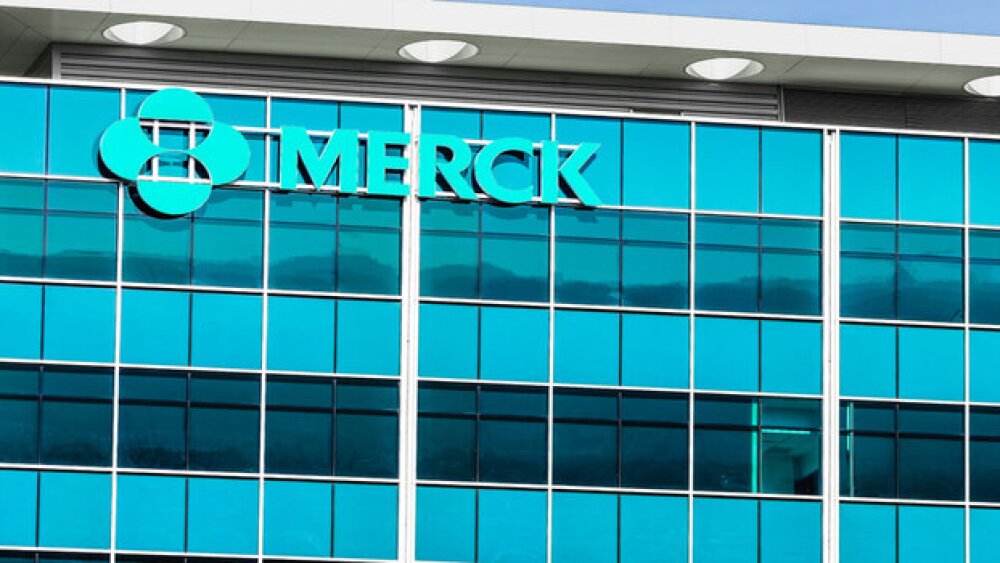REGENXBIO Inc. announced additional positive interim data from the ongoing Phase II ALTITUDE™ trial of RGX-314 for the treatment of diabetic retinopathy without center-involved diabetic macular edema using in-office suprachoroidal delivery.
- 47% of patients in Cohort 1 treated with RGX-314 demonstrated a ≥2 step improvement from baseline on the ETDRS-DRSS at six months, compared to 0% of patients in observational control; increase from 33% of patients at three months
- In-office suprachoroidal delivery of RGX-314 continues to be well tolerated in 15 patients in Cohort 1 with no drug-related serious adverse events at six months- No intraocular inflammation observed
- Cohorts 2 and 3 continue to enroll patients at a dose level of 5x1011 GC/eye
ROCKVILLE, Md., Feb. 12, 2022 /PRNewswire/ -- REGENXBIO Inc. (Nasdaq: RGNX) today announced additional positive interim data from the ongoing Phase II ALTITUDE™ trial of RGX-314 for the treatment of diabetic retinopathy (DR) without center-involved diabetic macular edema (CI-DME) using in-office suprachoroidal delivery. The data is being presented at the Angiogenesis, Exudation, and Degeneration 2022 conference by Michael A. Klufas, M.D., Retina Service, Wills Eye Hospital, Assistant Professor of Ophthalmology, Thomas Jefferson University. RGX-314 is being investigated as a potential one-time gene therapy for the treatment of wet age-related macular degeneration and DR.
“We are pleased to see that RGX-314 continues to be well tolerated at six months following a one-time, in-office injection, with nearly 50 percent of patients dosed with RGX-314 in Cohort 1 demonstrating a clinically meaningful improvement from baseline” said Steve Pakola, M.D., Chief Medical Officer of REGENXBIO. “We are continuing to enroll patients in Cohorts 2 and 3 and look forward to sharing additional updates from this trial”
“I am encouraged by the clinical improvement of disease severity observed in the ALTITUDE trial of RGX-314,” said Dr. Klufas. “Globally, DR is the leading cause of blindness in working-age adults, and these patients are in need of new treatment options. I look forward to the further investigation of RGX-314 as a potentially compelling treatment option for patients with DR.”
Study Design and Safety Update from Phase II ALTITUDE Trial of RGX-314 for the Treatment of DR Using Suprachoroidal Delivery
ALTITUDE is a multi-center, open-label, randomized, controlled dose-escalation trial evaluating the efficacy, safety and tolerability of suprachoroidal delivery of RGX-314 using the SCS Microinjector® in patients with a DR diagnosis of moderately severe or severe nonproliferative diabetic retinopathy (NPDR) or mild proliferative diabetic retinopathy (PDR). Twenty patients in Cohort 1 were randomized to receive RGX-314 at a dose level of 2.5x1011 genomic copies per eye (GC/eye) versus observational control at a 3:1 ratio. Cohort 2 will include 20 patients randomized to receive RGX-314 at an increased dose level of 5x1011 GC/eye versus observational control at a 3:1 ratio. Cohort 3 is designed to evaluate RGX-314 at the same dose level as Cohort 2 in 20 patients who are neutralizing antibody (NAb) positive. Enrollment is ongoing in Cohorts 2 and 3. Patients in this trial do not receive prophylactic immune suppressive corticosteroid therapy before or after administration of RGX-314.
As of January 18, 2022, RGX-314 was reported to be well tolerated in Cohort 1. Two serious adverse events were reported in two patients, both of which were not considered drug-related. Among patients in Cohort 1 dosed with RGX-314, no intraocular inflammation was observed. As previously reported, one patient experienced a mild case of episcleritis that resolved with topical corticosteroids. Common ocular treatment emergent adverse events in the study eye through six months were not considered drug-related and were predominantly mild. These included conjunctival hemorrhage and conjunctival hyperemia.
Summary of Data for Cohort 1 at Six Months
At six months, of the 15 patients dosed with RGX-314 in Cohort 1, seven patients (47%) demonstrated a two-step or greater improvement from baseline on the Early Treatment Diabetic Retinopathy Study-Diabetic Retinopathy Severity Scale (DRSS), the study’s primary endpoint, compared to zero of the five patients (0%) in the observational control group. One patient (7%) dosed with RGX-314 continues to demonstrate a four-step improvement. The percentage of Cohort 1 patients dosed with RGX-314 achieving at least two-step improvement at six months in RGX-314 treated eyes (47%) increased from the previously reported three-month results (33%). A 2-step improvement in DRSS has been accepted as a pivotal endpoint by the FDA for DR clinical trials.
In the seven patients who had NPDR (DR severity level 47-53) at baseline, 57% of patients demonstrated a two-step or greater improvement from baseline DRSS at six months after administration of RGX-314. In the eight patients who had PDR (DR severity level ≥ 61) at baseline, 38% of patients demonstrated a two-step or greater improvement at six months after administration of RGX-314.
At six months after administration of RGX-314, Cohort 1 patients demonstrated stable mean change in BCVA of +0.3 letters compared to baseline, while five patients in the observational control arm demonstrated stable mean change in BCVA of -2.0 letters compared to baseline.
Data presented today is available on the “Presentations and Publications” section of the REGENXBIO website at www.regenxbio.com.
About RGX-314
REGENXBIO is investigating RGX-314 in collaboration with AbbVie as a potential one-time treatment for wet AMD, diabetic retinopathy, and other chronic retinal conditions. RGX-314 includes the NAV AAV8 vector containing a gene encoding for a monoclonal antibody fragment designed to inhibit vascular endothelial growth factor (VEGF). RGX-314 is believed to inhibit the VEGF pathway by which new, leaky blood vessels grow and contribute to the accumulation of fluid in the retina.
Two separate routes of administration of RGX-314 to the eye are being evaluated, including a standardized subretinal delivery procedure as well as delivery to the suprachoroidal space. REGENXBIO has licensed certain exclusive rights to the SCS Microinjector® from Clearside Biomedical, Inc. to deliver gene therapy treatments to the suprachoroidal space of the eye.
About Diabetic Retinopathy
Diabetic retinopathy (DR) is the leading cause of vision loss in adults between 24 and 75 years of age worldwide. DR affects approximately 10 million people in the United States alone. The spectrum of DR severity ranges from non-proliferative diabetic retinopathy (NPDR) to proliferative diabetic retinopathy (PDR) and as DR progresses, a large proportion of patients develop vision threatening complications, including diabetic macular edema (DME) and neovascularization that can lead to blindness. Chronic, frequent treatment with anti-VEGF agents has been shown to improve DR severity and reduce risk of progression to vision threatening complications by > 70%. However, the majority of DR patients without vision threatening complications are not treated with anti-VEGF due to the unsustainable treatment burden of frequent injections in the eye.1
About REGENXBIO Inc.
REGENXBIO is a leading clinical-stage biotechnology company seeking to improve lives through the curative potential of gene therapy. REGENXBIO’s NAV® Technology Platform, a proprietary adeno-associated virus (AAV) gene delivery platform, consists of exclusive rights to more than 100 novel AAV vectors, including AAV7, AAV8, AAV9 and AAVrh10. REGENXBIO and its third-party NAV Technology Platform Licensees are applying the NAV Technology Platform in the development of a broad pipeline of candidates in multiple therapeutic areas.
Forward-Looking Statements
This press release includes “forward-looking statements,” within the meaning of Section 27A of the Securities Act of 1933, as amended, and Section 21E of the Securities Exchange Act of 1934, as amended. These statements express a belief, expectation or intention and are generally accompanied by words that convey projected future events or outcomes such as “believe,” “may,” “will,” “estimate,” “continue,” “anticipate,” “assume,” “design,” “intend,” “expect,” “could,” “plan,” “potential,” “predict,” “seek,” “should,” “would” or by variations of such words or by similar expressions. The forward-looking statements include statements relating to, among other things, REGENXBIO’s future operations and clinical trials. REGENXBIO has based these forward-looking statements on its current expectations and assumptions and analyses made by REGENXBIO in light of its experience and its perception of historical trends, current conditions and expected future developments, as well as other factors REGENXBIO believes are appropriate under the circumstances. However, whether actual results and developments will conform with REGENXBIO’s expectations and predictions is subject to a number of risks and uncertainties, including the timing of enrollment, commencement and completion and the success of clinical trials conducted by REGENXBIO, its licensees and its partners, the timing of commencement and completion and the success of preclinical studies conducted by REGENXBIO and its development partners, the timely development and launch of new products, the ability to obtain and maintain regulatory approval of product candidates, the ability to obtain and maintain intellectual property protection for product candidates and technology, trends and challenges in the business and markets in which REGENXBIO operates, the size and growth of potential markets for product candidates and the ability to serve those markets, the rate and degree of acceptance of product candidates, the impact of the COVID-19 pandemic or similar public health crises on REGENXBIO’s business, and other factors, many of which are beyond the control of REGENXBIO. Refer to the “Risk Factors” and “Management’s Discussion and Analysis of Financial Condition and Results of Operations” sections of REGENXBIO’s Annual Report on Form 10-K for the year ended December 31, 2020 and comparable “risk factors” sections of REGENXBIO’s Quarterly Reports on Form 10-Q and other filings, which have been filed with the U.S. Securities and Exchange Commission (SEC) and are available on the SEC’s website at www.sec.gov. All of the forward-looking statements made in this press release are expressly qualified by the cautionary statements contained or referred to herein. The actual results or developments anticipated may not be realized or, even if substantially realized, they may not have the expected consequences to or effects on REGENXBIO or its businesses or operations. Such statements are not guarantees of future performance and actual results or developments may differ materially from those projected in the forward-looking statements. Readers are cautioned not to rely too heavily on the forward-looking statements contained in this press release. These forward-looking statements speak only as of the date of this press release. Except as required by law, REGENXBIO does not undertake any obligation, and specifically declines any obligation, to update or revise any forward-looking statements, whether as a result of new information, future events or otherwise.
SCS Microinjector® is a trademark of Clearside Biomedical, Inc. All other trademarks referenced herein are registered trademarks of REGENXBIO.
Contacts:
Dana Cormack
Corporate Communications
dcormack@regenxbio.com
Investors:
Chris Brinzey
ICR Westwicke
339-970-2843
chris.brinzey@westwicke.com
[1] Wykoff, CC, 2021. Diabetes Care.
![]() View original content to download multimedia:https://www.prnewswire.com/news-releases/regenxbio-presents-positive-interim-data-from-phase-ii-altitude-trial-of-rgx-314-for-the-treatment-of-diabetic-retinopathy-using-suprachoroidal-delivery-301481071.html
View original content to download multimedia:https://www.prnewswire.com/news-releases/regenxbio-presents-positive-interim-data-from-phase-ii-altitude-trial-of-rgx-314-for-the-treatment-of-diabetic-retinopathy-using-suprachoroidal-delivery-301481071.html
SOURCE REGENXBIO Inc.
Company Codes: NASDAQ-NMS:RGNX





